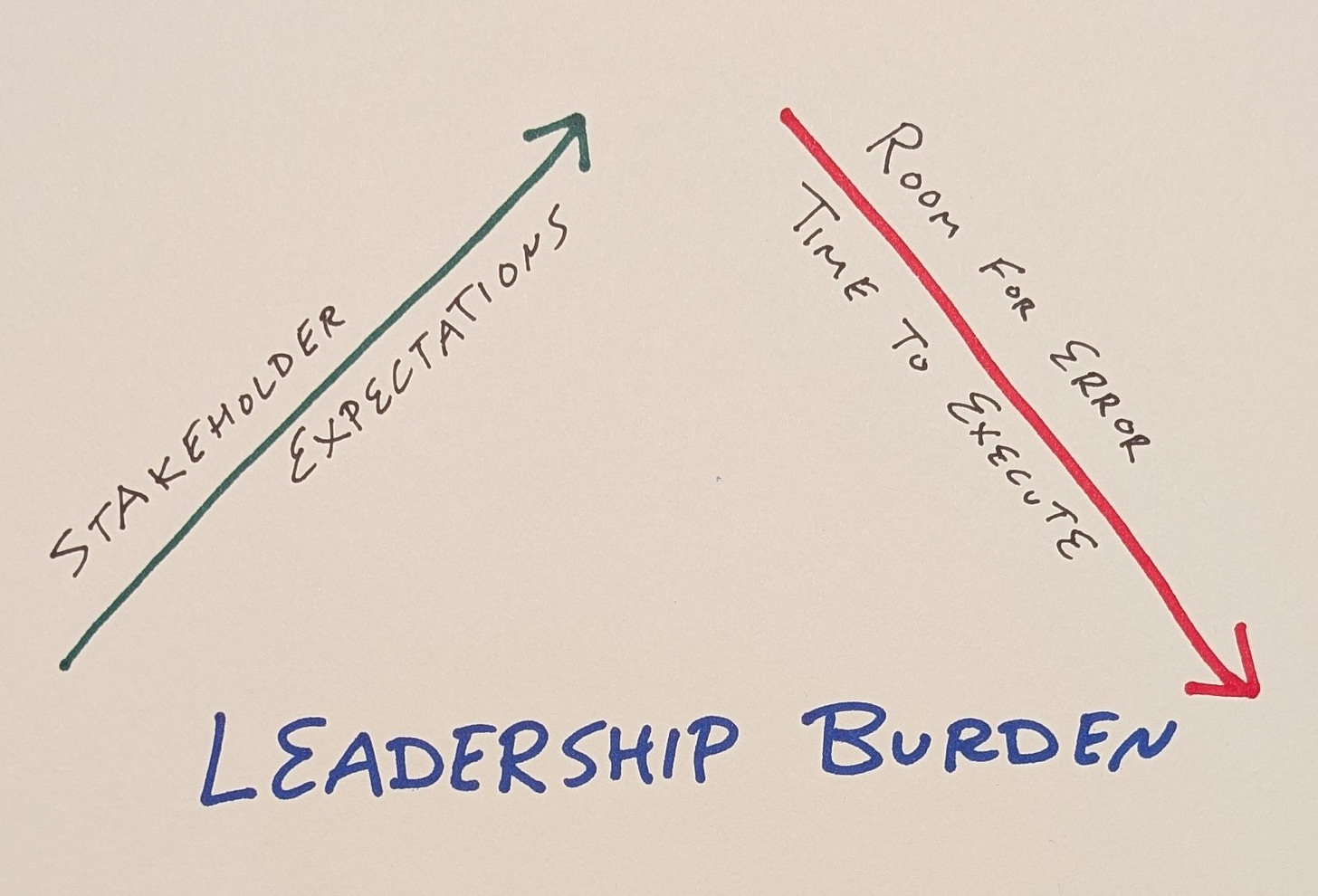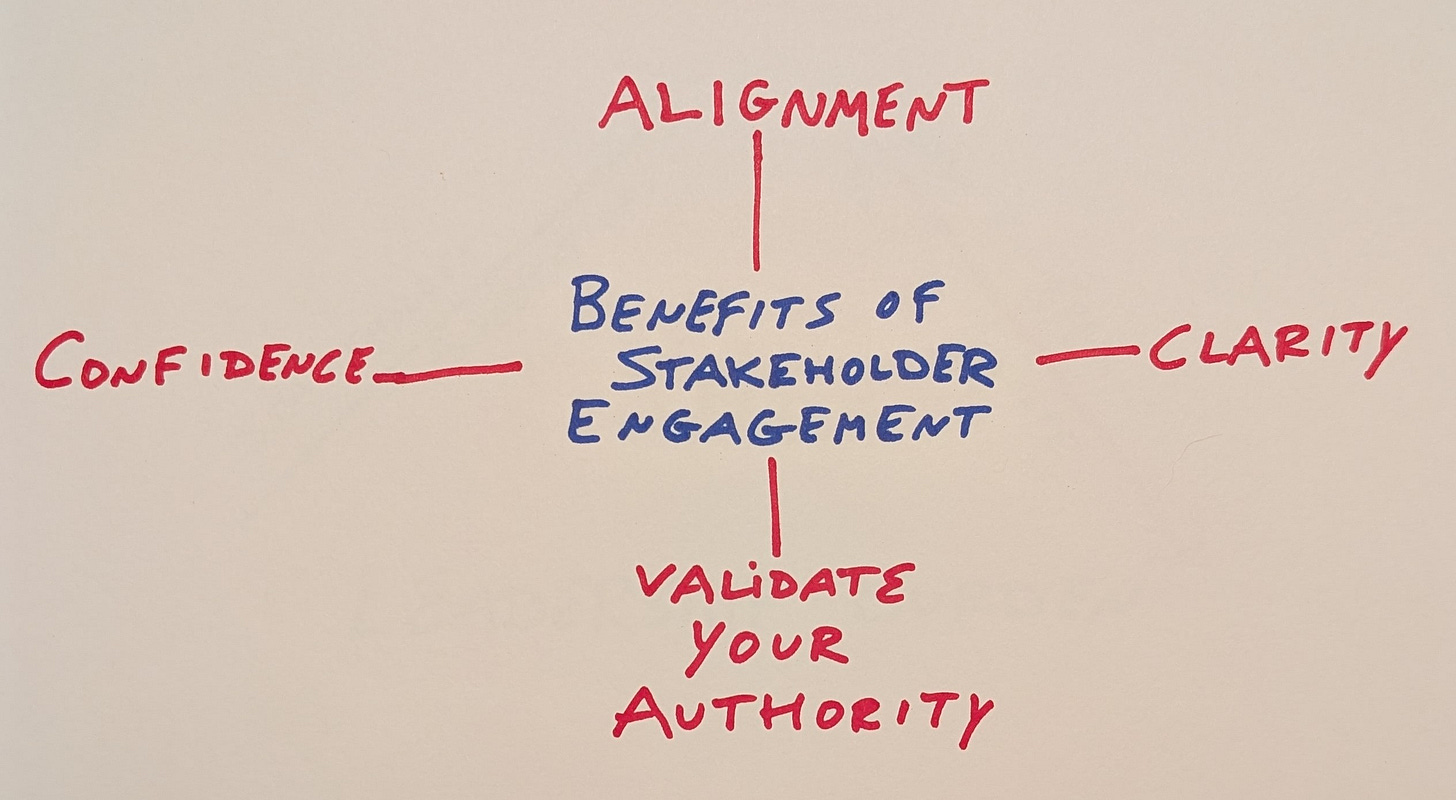Defining Stakeholders and Their Needs
Laying the foundation for all of your stakeholders is key. You can't build trust when a crisis happens. You build trust before a crisis happens. By Damon D'Amore
As a leader or team member both your labor and its output, the decisions you make and every forward-leaning action taken is in the service of a stakeholder and usually, multiple stakeholders.
Some stakeholders are internal to your organization, some external and, yes, also a stakeholder and arguably, the most important is yourself.
Examples of common stakeholders in both groups are a board of directors, employees, vendors, customers, investors, the broader market/media and leaders’ families and others directly affected in their personal lives by the major decisions leaders make.
Since the global shock of 2020 an inverse relationship has developed between leaders and their stakeholders in that the demands and expectations placed on leaders have increased exponentially while the timeframes to execute have collapsed and room for error has substantially decreased.
“Laying the foundation for all of your stakeholders is key. You can’t build trust when a crisis happens. You build trust before a crisis happens.” - Scott Keller
What Masters Do You Serve?
Your stakeholders are those individuals or groups who benefit the most from your unique treasure: all the knowledge, tools, resources, perspectives and value propositions gained from your life and career to date, having undertaken multiple challenges or “Hero’s Journeys” to get to this point in time.
The ability to identify who they are, succinctly define their needs and expectations of you, and clearly communicate why your stakeholders should advocate for you above anyone else is a major skill that sets apart lasting and great leaders from ordinary or subpar leaders - especially in times of ambiguity or crisis.
The benefits of knowing who you are serving, what they expect to gain and why are:
Alignment of interests for all parties.
Confidence that you are working towards providing them with what matters most.
Clarity in the expectation of value.
Ability to convince them of their increased potential with YOUR guidance, knowledge and unique treasure or more directly, validating your authority and cementing your position as the solution to their problem.
Goals of Engaged Stakeholders
Any individual or group depending on you to execute clear strategies that fulfill their needs and protect their interests generally have four main goals in maintaining a healthy stakeholder relationship with you:
Proactive engagement with you as a leader or your brand.
Continued confidence or reinforced confidence in your leadership and ability to deliver what matters most.
Interests protected and needs served - measurably and unequivocally.
They want to advocate for you and act on your behalf.
Expectation of forward momentum, not stalled or reversed momentum towards their needs being served.
Wanting to be led - a desire to trust and follow you/your brand as an authority in both peaceful times and periods of uncertainty.
Secondary Stakeholders and Why Story Matters
Knowing who your stakeholders are responsible for is almost as important as knowing their needs. The more value you can provide across the stakeholder chain with each decision, initiative or action returns exponential benefits - similar to the compounding effect of interest in savings.
Functional leaders (CMO, CFO, CRO, etc.) have their CEO as a primary stakeholder. In turn their CEO has a range of stakeholders (secondary) including but not limited to their board of directors, investors or institutional shareholders, and typically the business ‘media.’
Tertiary stakeholders are those indirectly affected by the actions of your secondary stakeholders (the general public, government agencies and regulators who make decisions based on industry trends and actions, etc.)
“The best quality policy is to serve your vision in the stakeholders as their idea.” - J. Kumar
Creating compelling narratives that resonate with stakeholders to help them see themselves and their stakeholders accomplishing what matters most in their world is the primary responsibility of a leader.
Additionally, being able to define secondary and tertiary stakeholder needs is what sets apart great storytellers who consistently gain engagement, advocacy and resources for their initiatives.
Communicating that you not only understand your stakeholder’s needs and want to provide them with solutions and value but understand the web of relationships and demands on them from their stakeholders is what separates a sales-pitch from an engagement of lasting and measurable value.
“All you must do is first pay attention; listen to them; show them respect; give them meaning, satisfaction, and fulfillment. Convey to them that they matter to you.” - Peter Kaufman
A Framework to Begin
As a high-level exercise to begin getting clients and students familiar with their stakeholder journeys, I like to deploy the following ten prompts to act as a baseline for deeper detailed profiles of all stakeholder groups.
Who are they - Internal?
Who are they - External?
Are they Primary Stakeholders?
Individuals or groups that can be directly affected in a positive or negative way.
Are they Secondary Stakeholders?
Individuals or groups that can be indirectly affected in a positive or negative way.
What do they stand to gain or lose?
If you succeed?
If you fail?
Can you quantify success or failure in a metric?
How is their gain or loss manifested?
What are their expectations of you?
Time
Resources
Channels which you deliver to them
What are your expectations of them?
Time
Resources
Channels how they communicate and deliver to you
What are their priorities?
Schedule / Timing
Cost
Performance
Quality
Etc.
What are the rules for them to engage with you?
Approval process
Executed contract
Etc.
Are they friendly or hostile?
Developing detailed stakeholder profiles is valuable when creating narrative structure and stories of their journeys later in the communication process.
The narrative strucure of stakeholder journeys is a topic that will be addressed in future posts.





